Landing a fish in the kayak offers many challenges. Whether the fish is three pounds or 30, getting the trophy from the water into the boat can lead to chaos and a lot of cussing. Nets, gaffs and grippers help, but these items take up space and often prove to be more trouble than they’re worth. For a simpler approach, trophy hunters have developed a quick and effective way of lifting a fish into the boat.
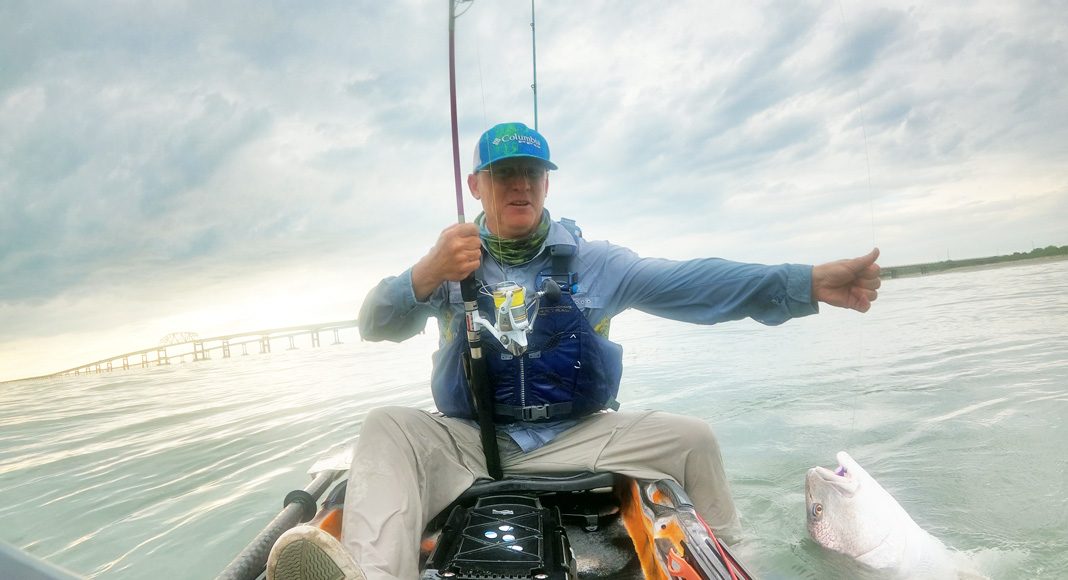
Step 1
First, be sure the fish is tired. Bringing a green fish onto the kayak usually ends in the fish’s favor. On the other hand, don’t prolong a fight and cause the fish undue stress. The fish will let me know when it’s ready by circling next to the kayak and rolling on its side. Clear the deck and secure the paddle. Then, I lower my leg into the water and guide the fish boat side. Not only does this prepare me for the fish sweep, but it increases my stability.
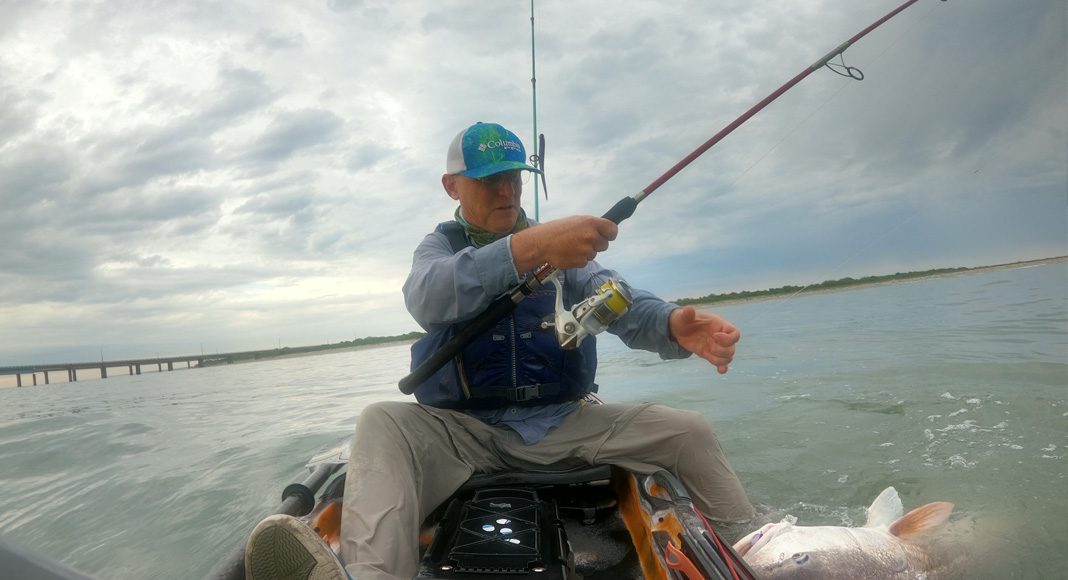
Step 2
Next, I put the rod in the rod holder. A loose rod is likely to end up overboard. In this photo, I am controlling the fish with the leader in my fingers and using my thumb to pull line from the reel. If the fish gets a second wind, I can release the leader and let it run. Throughout the process, keep tension on the line to keep the hook tight in the fish’s mouth and prevent the line from wrapping around the rod tip.
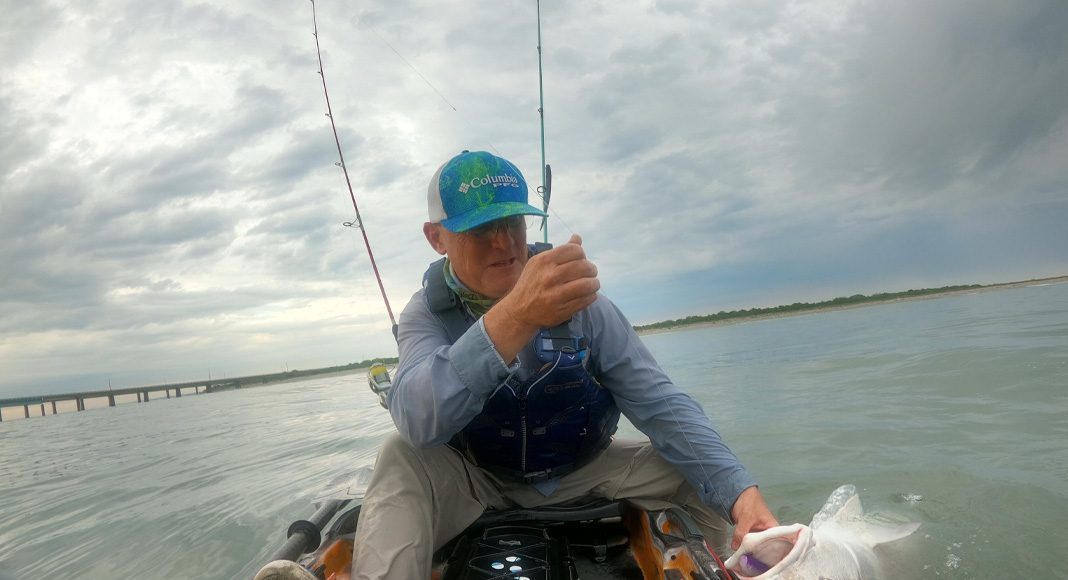
Step 3
The rod is in the holder and the line is tight. I loosen the drag one turn and make sure the line is not wrapped around the rod tip. All the while, I hold leader to control the fish and maintain tension on the line. Again, if the fish goes wild, I can release the leader and return to fighting it with the rod.
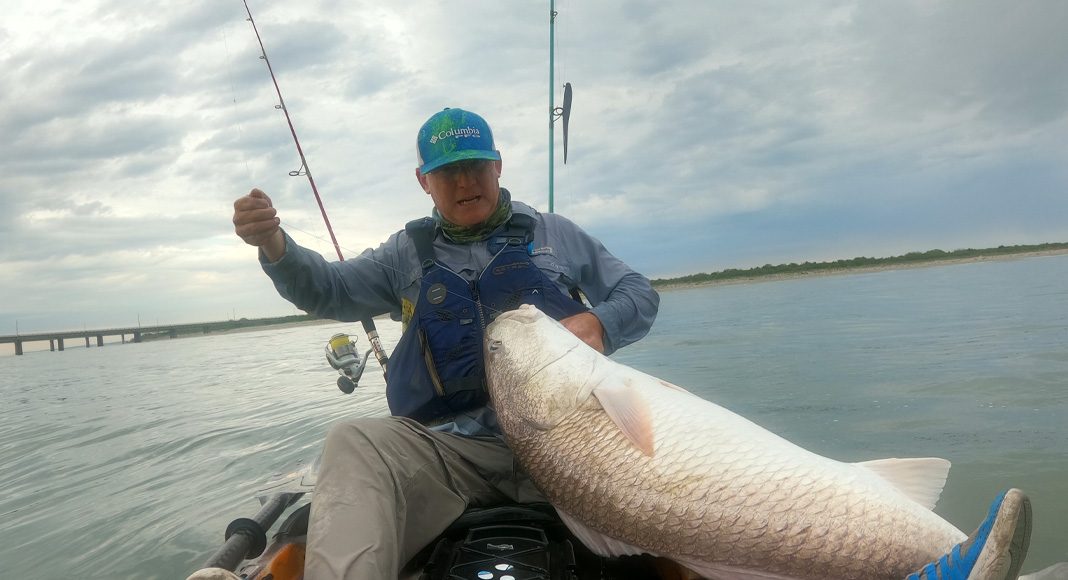
Step 4
Every fish has a handle. For red drum, there is a divot under the chin perfect for a solid grip. With the leader in my right hand to maintain tension on the line, I grab the drum with my left hand and use my leg to sweep it into the kayak. At any point, the fish can engage in fin to fists combat. Be prepared for the wild animal to go berserk and possibly jump overboard by keeping the line tight until the fish is unhooked.
This article was first published in Kayak Angler Issue 43. Subscribe to Kayak Angler’s print and digital editions here, or browse the archives here.
Preparing for the sweep in step one. | Photos: Ric Burnley



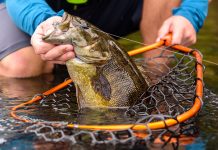
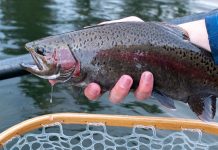


When kayak fishing I always have a chain stringer attached to the boat with the next free snap hook open and ready to hook the fish while still in the water. Securing the rod and bringing the fish up alongside the boat I can reach over, grab the chain stringer by the shank of the opened hook and quickly reach down and thrust it through the lower jaw. Ideally I’d snap the hook into the catch to secure it or at least have the fish hooked open immediately. Once the hook is closed I can then drop the fish back down into the water without ever hauling it up out of the water. If I need to bring it up on deck, the stringer is attached and the fish is pretty much secure. Haven’t caught a monster yet, but for big, feisty salmon and other keepers, it’s a a quick, easy and secure way to keep it.